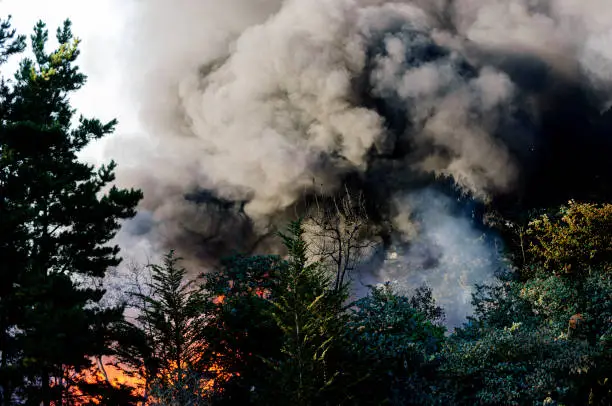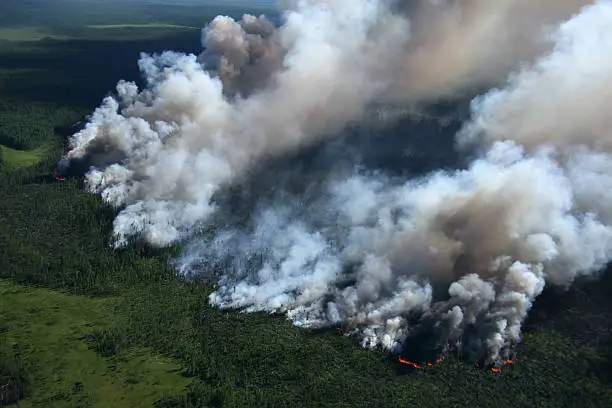Southern U.S. Faces Growing Wildfire Threat, New Climate Report Warns

The southeastern United States, long thought to be relatively immune to the devastating wildfires that plague the West, is now facing a growing threat from increasingly frequent and intense fires, according to a new federal climate report released this week.

Published by the National Climate Assessment (NCA) team, the report paints a sobering picture of how rising temperatures, rapid urban expansion, and decades of forest mismanagement are converging to turn the South into a potential wildfire hotspot.
A Region at Risk
States such as Georgia, Florida, South Carolina, and North Carolina are highlighted as high-risk areas due to their expanding suburban zones encroaching on wildlands, where dry brush and unmanaged forests create ideal fuel for fires. The report notes that while the Southeast has historically experienced smaller, less intense fires than the West, that pattern is shifting quickly.
“Climate change is altering the environmental conditions that have traditionally kept large wildfires in check in the southeastern U.S.,” said Dr. Rachel Ellis, a lead author of the report. “We’re seeing a dangerous blend of hotter, drier seasons and rapid land development without adequate fire prevention planning.”
Heat, Development, and Fire
Key drivers of the increased wildfire threat include:
- Rising Average Temperatures: The Southeast is now experiencing longer periods of drought and extreme heat.
- Population Boom: Explosive suburban growth is pushing communities into former forests and grasslands, increasing ignition sources and risk exposure.
- Poor Forest Management: Fire suppression policies of the past have left a buildup of combustible vegetation, creating fuel beds for catastrophic fires.
In addition to the human toll, the report emphasizes the ecological consequences of more frequent fires. Sensitive ecosystems such as wetlands and longleaf pine forests could be severely affected, threatening biodiversity and disrupting natural fire-adapted cycles.

Consequences Beyond the Flame
Wildfires aren’t just a threat to lives and homes—they bring far-reaching public health risks. The report warns that air quality could deteriorate significantly across the South, with smoke particles contributing to higher rates of asthma, heart disease, and other respiratory conditions.
In rural areas, water quality may also be at risk as post-fire runoff dumps ash, debris, and sediment into rivers and reservoirs. The 2023 Okefenokee Swamp fires in Georgia were cited as a case where local drinking water systems had to be temporarily shut down due to contamination.
A Call to Action
Federal and state officials are urging swift action to mitigate the risk. Recommended policies include:
- Implementing controlled burns to reduce vegetation overgrowth.
- Revising zoning laws to discourage development in fire-prone areas.
- Expanding public education campaigns on fire safety and emergency preparedness.
- Investing in modern firefighting infrastructure and early-warning systems.
“There’s still time to make smart choices, but that window is closing,” said FEMA Regional Administrator Angela Soto. “If we wait until these fires are at our doorstep, we’ll already be too late.”
Political and Public Response
The report has reignited debates in state legislatures across the region, particularly in Florida and Georgia, where lawmakers are weighing new fire prevention bills and disaster response funding. Environmental advocacy groups are pushing for more aggressive climate action to address the root causes of increased fire risk.
Meanwhile, residents in high-risk zones are being encouraged to create defensible space around their homes, maintain emergency kits, and stay informed through local fire advisories.
Conclusion
As the southeastern U.S. braces for what scientists call a “new normal” of climate volatility, the wildfire threat underscores a broader national reckoning with environmental policy, urban planning, and climate resilience. The South may no longer be immune to the infernos once seen as a uniquely Western problem—and how leaders respond today could shape the region’s future for generations.





